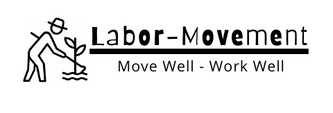Breathing
Core Activation
Thoracic RotationsHip MobilitySquats
Ankle Mobility
Feet
Shoulders
Hands/Wrists/Forearms
|
Learn how to breathe and expand your rib cage effectively, especially when so much time is spent in a forward lean or bent over position that challenges adequate breathing.
Core engagement is the best way to protect your back (in addition to spine alignment with lifts/lowers). Using your abs allows upper body moves to be stronger. Finding more movement through thoracic rotation may help with activities including harvesting from a crouched position, loading/unloading market vehicles, and tractor driving. It's true. Hips don't lie. Find your starting place and progress or regress as needed. (Kind of a long video, but worth it for the pointers and cues.) Keep your torso upright with spine in alignment when you have a front load. (Think of the dowel against your back.) Full hip extension when you stand up by squeezing your butt - this unloads your low back. Sometimes decreased ankle mobility due to stiffness or mechanical constriction (boots) can impede your ability to squat effectively or for longer periods of time. Your feet are SO important for power, balance, posture and the alignment of the rest of your body. Consider looking at footwear or replacing insoles a few times a season. Check out The Foot Collective and Gait Happens. Shoulder packing is important for protecting your shoulders AND for gaining strength from larger muscle groups when you are moving loads. In conjunction with core engagement, this will put load onto your entire body rather than just your arms/shoulders. Consider how much work your hands, wrists and forearms do each day. Here are some places to start. |
